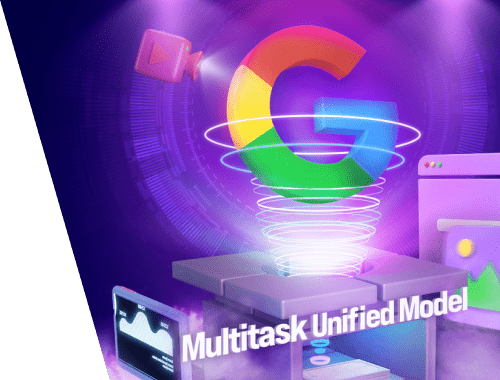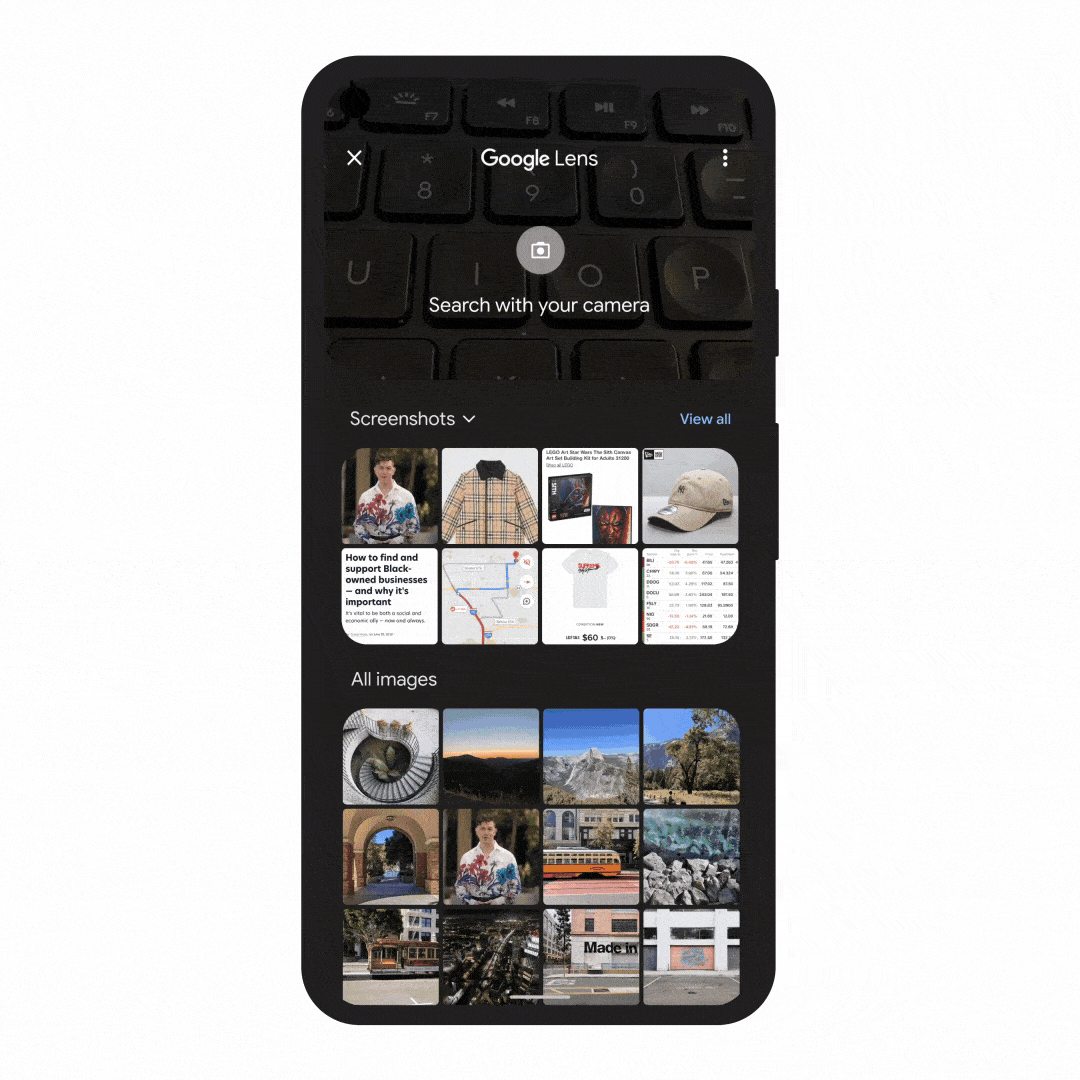27944
•
10-minute read


You must have heard about MUM by now. It’s the technology that’ll help Google answer complex search queries and its rollout is marked for early 2022. If it works as intended, MUM will radically change the appearance of search results and also the way we use search in general. But the important question is, will it finally kill SEO? Or will it affect your hard-earned rankings?
In this article, we put together everything we know about MUM and see if it warrants an adjustment in your search optimization strategy.
MUM (Multitask Unified Model) is an AI designed to analyze and generate content as a human would. It's an evolution of the BERT algorithm, except it is 1000 times more powerful.
The main goal of MUM is to address complex search queries. Currently, these types of queries require an average of eight searches to resolve. Google is looking to predict what those searches are and address as many of them as possible on a single SERP.
However, this is not the only intended use for MUM. Google is sharing the AI across its departments in hopes that MUM will be able to solve other search challenges as well. Currently, there are no predictions as to what these challenges might be, but you can expect MUM to pop up throughout Google updates from now on.
The goal of MUM is to answer complex search queries and to fit more of a buyer journey onto a single SERP. Of the announced MUM-related features, most look like an advanced recommendation system. Here are the features we know about so far.
You’ll soon be able to use Google Lens to snap a photo and ask a question about what’s in it. Google gives you an example where you can take a picture of a shirt and find socks with the same pattern:

Or you can snap a bike part and ask Google how to fix it or where to buy a replacement from. This actually sounds useful to the end-user and I imagine trying it from time to time.
Certain types of queries, like searching for inspiration, ideas, and apparel, will trigger image universal blocks in search results:

It doesn’t sound like something that requires an AI to implement, but it will be up to MUM to decide when to trigger visual SERPs and which images to pull up from the ranked pages.
With the help of MUM, Google will be able to analyze videos more deeply and identify topics related to different parts of the video. In turn, this will allow Google to use its recommendation system to make better suggestions on what to watch/read/consume next after watching a video:
Google is adding a new SERP feature called Things to know and it’s basically an advanced recommendation system. Its function is similar to the People also ask feature — to refine your search and take you further on your buyer/learner journey.
The key difference is that the People also ask feature usually takes you just one or two steps further in your search, while the Things to know feature aims to take you all the way.

This is not entirely new, it’s an evolution of an existing feature, except the suggestions are now more confident and more far-fetched.
Furthermore, Google is adding features called Broaden/Refine this search:
This is also similar to the existing feature called Related searches. Except, again, the suggestions are supposed to be more on point and offer more directions for further queries.
Well, to be honest, there haven’t been ten blue links for a while now. SERP is already loaded with rich features that draw attention away from regular snippets. Here is me searching how to ride a motorcycle and it took me three full scrolls before I got to the first “organic” search result:
So, even though ten blue links are still present in SERP, they are no longer the main course.
With the introduction of MUM, the importance of the conventional search results will be diminished even further. The upper part of SERP will become much more engaging and even fewer clicks will trickle down to the regular snippets.
Kind of continuing the previous point, the concept of ranking in a certain SERP position will become largely meaningless.
First, with so many special features occupying the top part of SERP does it even matter if you rank first after about ten “non-organic” search results?
Second, MUM is supposed to pay much more attention to the context of the query. This means that two different people using the exact same query will probably get two different SERPs. The difference will come from things like search history, location, stage of the buyer journey, and overall content preferences. This is also not new but it’s going to become much more pronounced with MUM.
Third, Google is moving away from showing ten similar pages on SERP and is moving towards showing a fully multimodal SERP with a bit of everything thrown together. I even expect that sometime in the future Google will abandon the leaderboard type of SERP altogether and fully commit to the wiki type of SERP.
To sum up, in this type of SERP, you are either featured or not and you don’t directly compete with others in the same SERP, because each of you delivers a different type of content. So it’s not like you are in position one or two or three, you either made it or you didn’t and that’s it.
MUM does not require a radical adjustment of your SEO strategy. That being said, it does put more weight on some of the newer SEO elements, things like entities and advanced content markup. Here are the strategies that will be important with the introduction of MUM.
One of the things about complicated algorithms is that they require a lot of processing power. Yes, Google is now capable of analyzing your pages in much more detail, but it still doesn’t have the capacity to analyze every single page on the web.
So, what Google is likely to do is use a simpler algorithm to pre-select pages based on relevance, quality, and authority, and then use MUM to pull specific pieces of content from these pages. Same as before, you have to establish subject relevance with entities, authority with backlinks, and quality with user experience signals. I doubt that MUM will ever look at pages that don’t have these covered.
Google used to evaluate page relevance based on the number of times a certain keyword is repeated on a page. The more the keyword is repeated, the more relevant the page is.
Today, the relevance is more about how the page fits into the larger context of the subject. Does it come from a website that specializes in this subject? Is the content written by an author who is an expert? Does it mention other associated entities? Does it link to relevant sources? Is it linked to by other relevant websites?
Establishing entities goes beyond just keywords. It’s a combination of using the right keywords (in moderation), building links (not just backlinks), and adding proper markup. Use this entity guide to learn more about entities and how you can highlight them in your content.
Try to imitate Google’s approach in your content strategy. If you are creating content for a product, your goal is to cover each step of the customer journey.
Let’s say you sell bike parts online and you are creating content to help you do that. Think of every type of question and every piece of information that’ll get your customers from needing a new bike part to getting one from your store.
For example, at least some of your customers will start their journeys by looking up how to fix something on a bike, like how to fix a derailleur. They will naturally need a step-by-step guide, both in text and video format. But they might also have a bunch of follow-up questions, like:
In the future, you will be able to source these questions from MUMs Things to know and Broaden/Refine this search. But you can start today by exploring existing recommendation features in SERP and adding more useful information to your content:
I’ve been surprised to discover that some recommendation features in SERP have already turned multimodal even though MUM is not officially in use. Here is the Related searches block at the bottom of SERP and it includes products, videos, and a few search suggestions:
Google Merchant Center is a program that allows you to verify your products with Google and have them listed across various Google services. Basically, whenever Google needs to make a product suggestion, it will draw from a pool of products verified with the Merchant Center.
Taking advantage of this program is especially important since Google is turning in a more obvious commercial direction. By shortening buyer journeys with multimodal SERPs Google now has an excuse to show product suggestions for almost any type of search, even if the searcher intent is not immediately transactional.
You are also in luck if you are using WooCommerce and Shopify, because these platforms are in partnership with Google Merchant Center and can have their products verified with just a few clicks. If you are not using these platforms, please refer to our article for a quick guide on how to start using Google Merchant Center.
Increasingly, Google is using small pieces of our content to answer search queries. It started with featured snippets, where Google would quote the most relevant paragraph from a page.
And now it’s spread to videos, where Google highlights the most relevant segment.
There are also People also ask and various other SERP features that use images, videos, products, and small pieces of text from our pages.
If you want to participate in this kind of SERP, then you have to play ball and help Google find these relevant pieces of information on your pages. The most obvious way to do that is to use proper markup in your content.
YouTube metadata is what helps Google analyze your videos and split them into smaller pieces. You can add closed captions so that Google has a transcript of your video and you can also split your videos into chapters by adding timestamps. Learn more about video metadata in our guide to YouTube SEO.
Schema markup helps you get rich snippets in SERP and highlights important pieces of content on your pages. You can use it to enhance product pages, Q&A sections, reviews, business details, and blog articles. Learn more about applying Schema markup in our structured data guide.
HTML tags should be used for highlighting important pieces of text on your page and for describing images. Titles, meta descriptions, headings, and image alt texts are among the essential HTML tags for SEO and will help you get into featured snippets and image search. Please refer to our HTML tags guide for more detail on how to use them on your pages.
In the past, Google preferred to answer some queries with text and some with video. Today, most queries would get both, just in case:
Above is the textual answer for how to ride a bike, and below is a collection of videos from the same SERP:
Further down the page are also a couple of images with instructions:
So it seems Google is getting more generous with SERP real estate and now features two or more types of content to answer each query.
Again, if you want to participate in this kind of search results, then you will improve your chances by creating each piece of your content in three modes: text, image, and video.
Clean content structure will help Google pull paragraphs of text or segments of video from your content. To create a clean content structure, follow these basic principles:
That last point I think is a common failure in most written content. Or video content for that matter. I often encounter content that takes a winding path to give me an answer and the information is spread across several paragraphs and I would be lucky to get a summary at the end. I’m sure that MUM will be able to extract these kinds of answers, but I’m also sure it’s not going to bother with all the work if it can get a concise answer within a single paragraph and just pull it as is.
The main implication of MUM is the shift from a leaderboard type of SERP to a wiki type of SERP. Complex queries will now be addressed by SERPs loaded with special features, to the point where regular snippets would be pushed so far down the page that they will become irrelevant. For these queries, we should probably abandon the idea of ranking in a certain SERP position and instead focus on being featured in one of the special features at the top of the page.
To play this game, you’d have to make your pages MUM-eligible with classic Google ranking signals, like relevance, authority, and quality. Once this is done, you can focus on creating more types of content per query and making this content more digestible through markup and clean content structure. It’s nothing new in terms of SEO, except before these things were just advisable, and now they are mandatory.